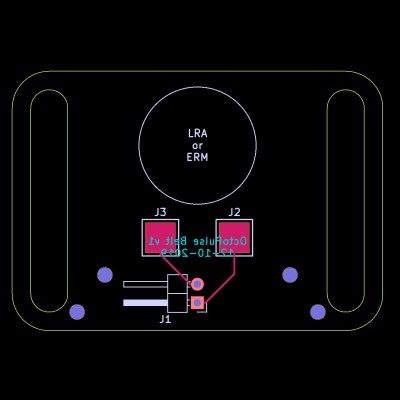Virtual reality holds the promise of an immersive experience that can satisfy our senses to a level comparable with… well, reality. The field has come a long way, but Sarah Vollmer makes a good point that many of the VR systems currently in use are bulky and difficult to transfer from person to person.
While headsets have become smaller and lighter and now feature improved motion tracking and resolution, their ability to affect the user’s other senses hasn’t seen nearly the same advancement. Haptic feedback systems need to catch up with headsets, and how to unobtrusively allow users feel simulated physical contact in VR is an area Sarah is researching as part of her PhD work. This is the topic of her 2019 Hackaday Superconference talk which you’ll find embedded below.
Sarah brought along one of her current prototype systems which acts as a central hub for up to eight different actuators. The PCB for the sensor board includes two cutouts through which an elastic belt can be passed to secure them to wrists or other parts of the body. Each board accepts either a eccentric rotating mass (ERM) or linear resonant actuator (LRA) — two types of vibration motors with ERM being what you might associate as a pager motor while the LRA encapsulates the unbalanced weight in a disc spinning on an axis perpendicular to the PCB. Open Sound Control is used to send signals to these modules in sync with actions in the virtual environment.


Where things get really interesting is in Sarah’s concept for unobtrusive wearables for your hands and wrists. Current technology uses gloves, but she’s pursuing rings and bracelets. The hope is that rings around the wrist and fingers can be used for both granular motion tracking and haptic feedback. Pumping air or liquids into bladders built into the material could provide the sensation of pressure, and she’s even looking into the possibility of using direct electric stimulus.
Having to don bulky or heavy equipment has the opposite effect from what virtual reality is trying to achieve. Making systems both light-weight and tightly reactive to the digital environment is key to making the virtual more real and something we can all look forward to as this research continues.
No comments:
Post a Comment